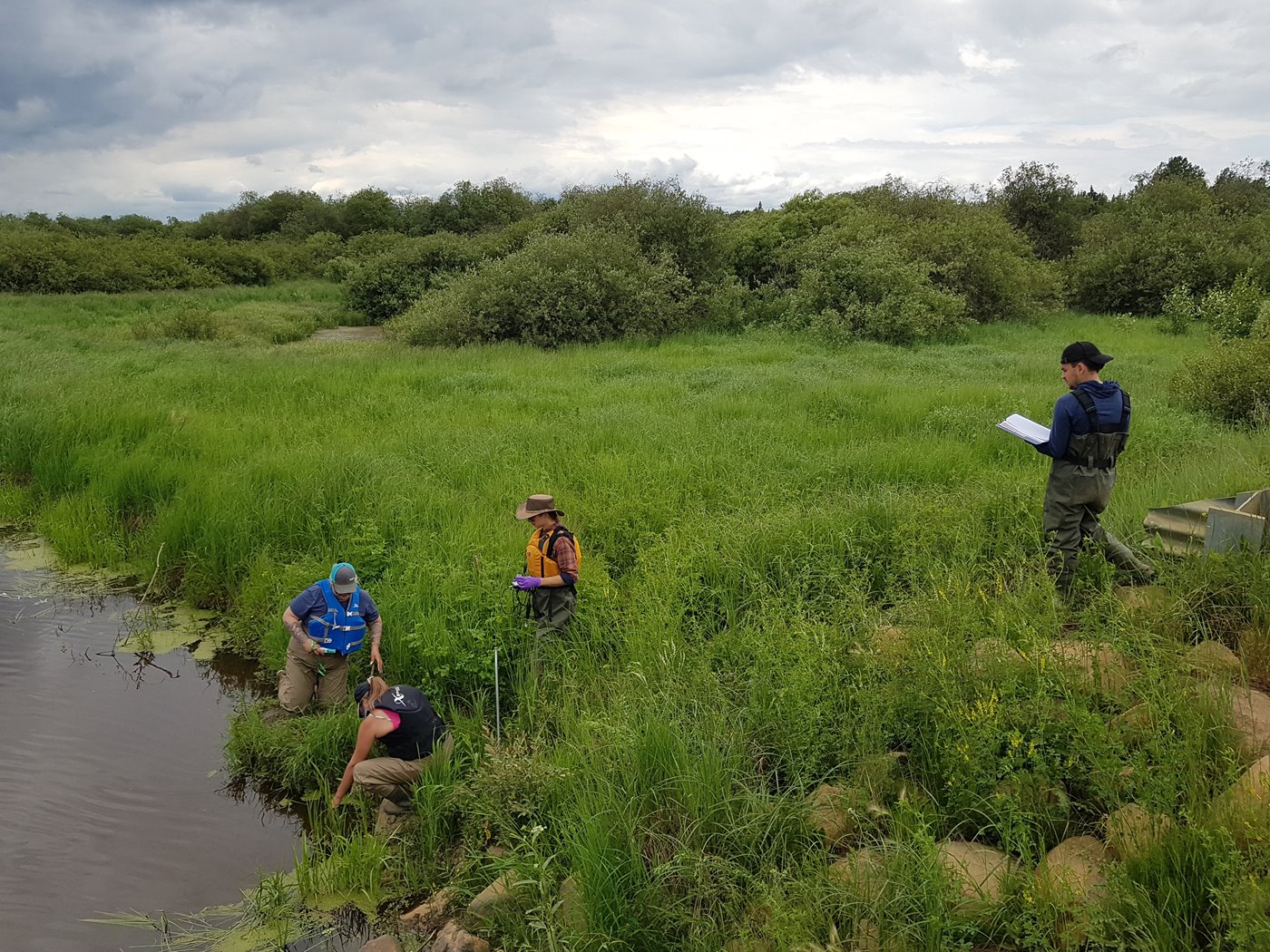Indigenous Community-Led Environmental Monitoring Program
Summary
This project provides capacity-building services to support the establishment of Indigenous-led, community-based environmental monitoring programs.
Our aim is to equip Indigenous communities to take the lead in environmental stewardship of their own lands by collecting data on the health of their local environment, and developing data-based environmental stewardship strategies.
These programs are supported through training in field sampling, safety, laboratory analyses, data interpretation and use of digital tools developed over the course of the project.
Problem statement
This is important for communities to be rightfully recognized as true partners and authorities of their own data
Indigenous communities live on the front lines of environmental stressors brought about by climate change and industrial development. To mitigate these stressors, communities strive to develop strategies that achieve true, equitable data sovereignty, an important step for communities to be rightfully recognized as true partners and authorities of their own data. This sovereignty is considered the cornerstone to autonomously developing landscape level management plans. Crucial to achieving this goal is the ability of community members to autonomously monitor their land, generate and interpret data and enact management programs.
Our Solution
Through meaningful engagements and conversations with our partners’ community members and knowledge keepers, our team seeks to thoroughly understand the needs of your community and your environmental stewardship goals.
This program is designed to support the development, quality, and long-term viability of Indigenous community-based monitoring programs. Training and applied research are combined and brought to Indigenous communities and executed with community members as part of the team. The program combines NAIT’s expertise in environmental science, hands-on training, and applied research with traditional knowledge from community Elders and knowledge-keepers.
Outcomes and impacts
Our model purposely meets learners at their personal level by including them as research team members, and supporting practical skill development by solving problems relevant to their land. Learners will have community support to present at conferences and will be empowered to speak with authority about the environmental stressors affecting their land, supporting their findings with data-based evidence and testimonials.
NAIT will benefit from the different perspectives each community brings to the project by learning new skills, techniques and insight into traditional knowledge that don’t form part of regular curriculum.
Our Partner Organizations
Our Stories

Indigenous Community-Led Environmental Monitoring Program
This project will aim to provide capacity-building services for Indigenous communities to support the establishment of Indigenous-led, community-based environmental monitoring programs.
Share on Facebook
